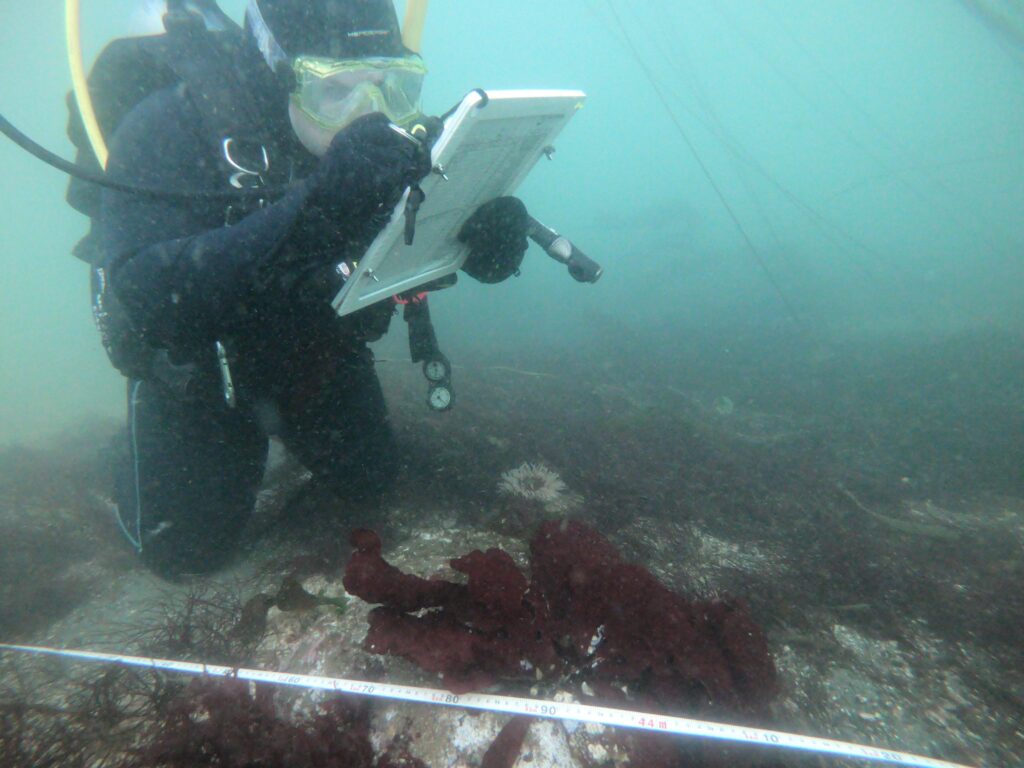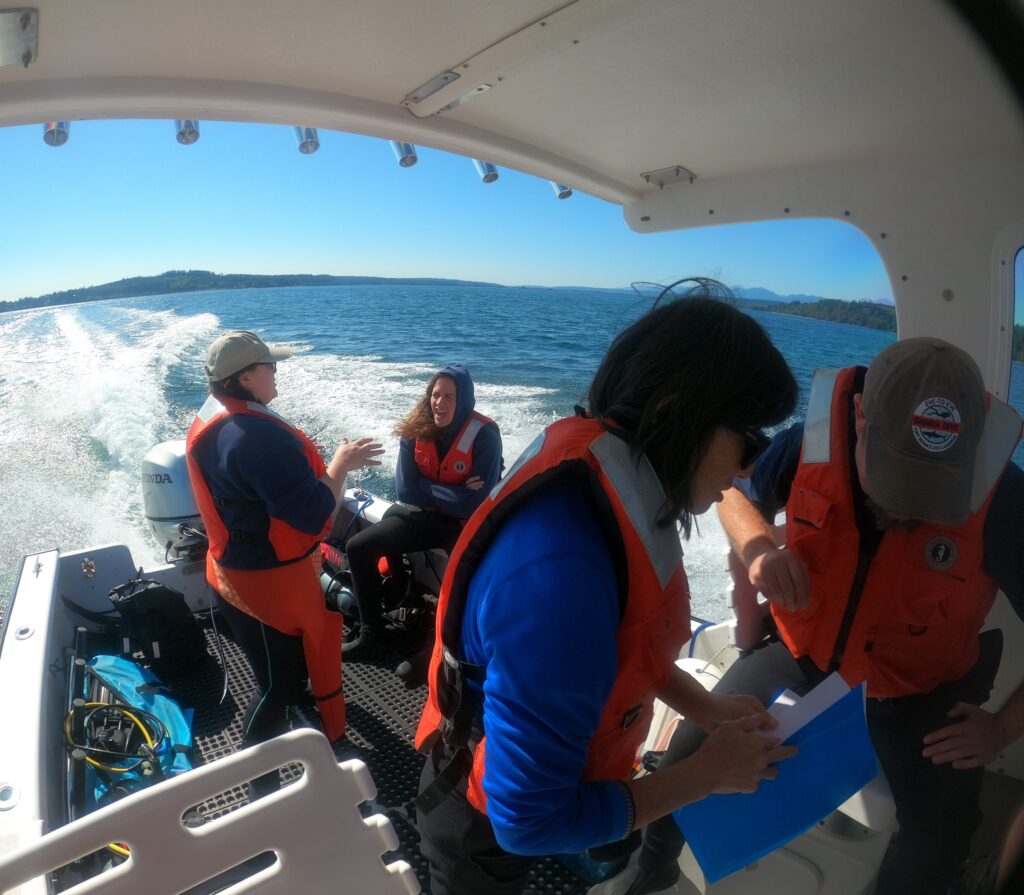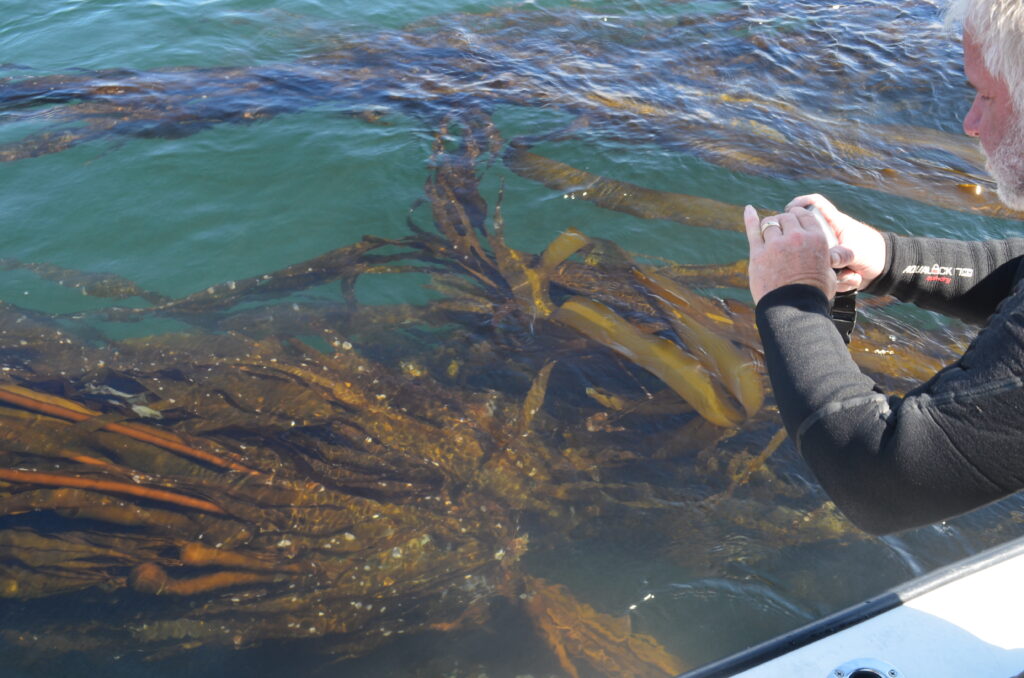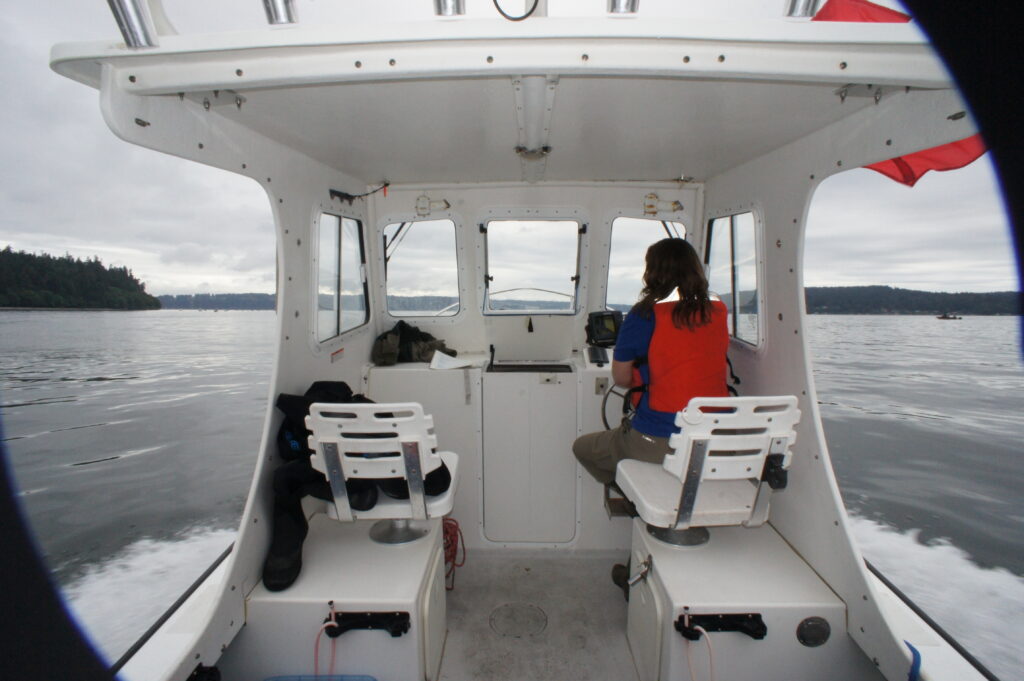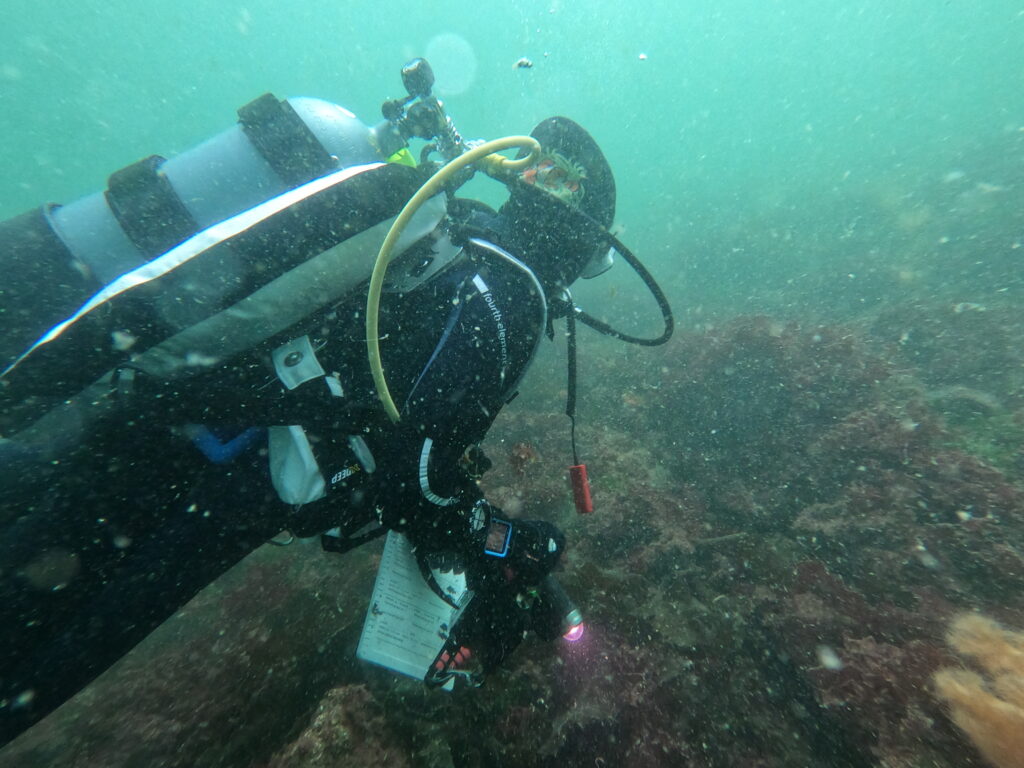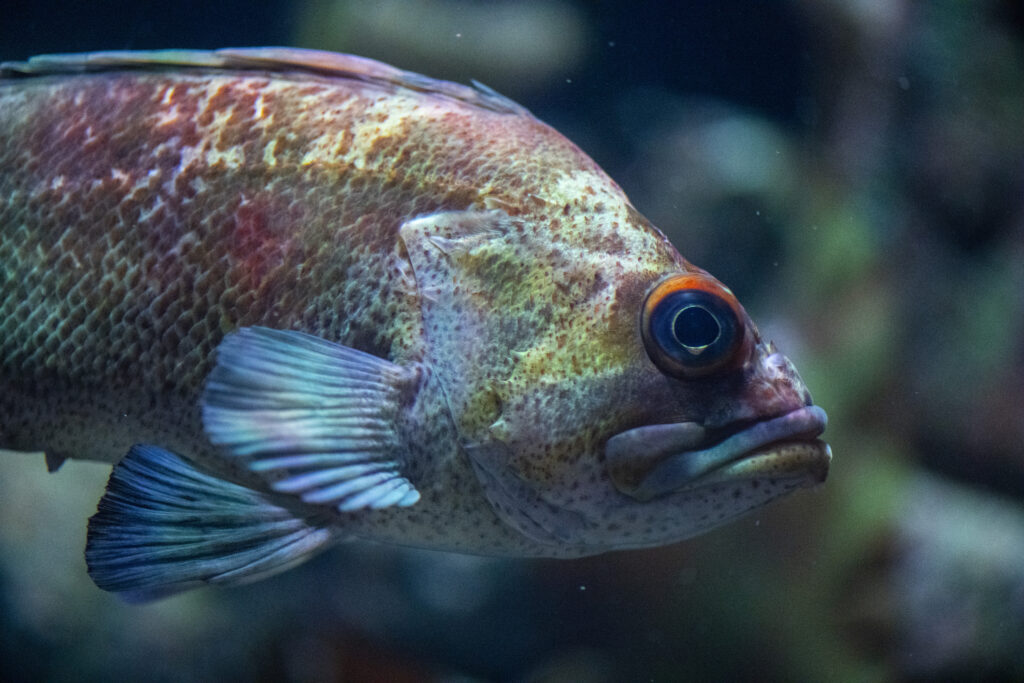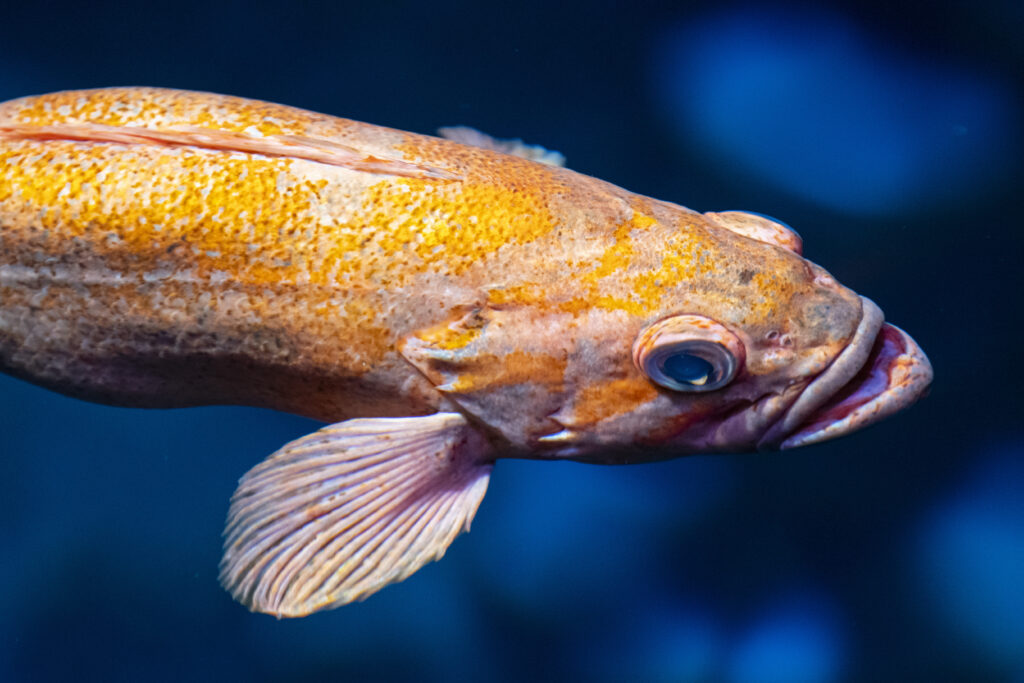Checking in on Puget Sound’s Health
How healthy is Puget Sound? What areas are showing declines, and which are holding steady? Those are the questions divers at Point Defiance Zoo & Aquarium are helping to answer. Staff and volunteer divers are conducting underwater surveys in Puget Sound to monitor the abundance of kelp ecosystems and rockfish. These are important for both Puget Sound’s and people’s health.
Kelp forests provide homes, protection, and food to many species, from tiny crabs and young fish to sea otters, harbor seals, and baby grey whales. When the kelp disappears, it puts all the amazing animals that depend on it at risk, including rockfish, one of the main groups of fish residing in the cold-water habitats at Point Defiance Zoo & Aquarium. Rockfish species play a big part in the food web, benefitting the Puget Sound ecosystem. For example, larval and juvenile rockfish are a food source for juvenile salmon and other marine fish and seabirds. Healthy kelp forests affect the entire food web, all the way up to Southern Resident killer whales.
Surveying kelp
Out in the Sound, the zoo’s divers lower themselves into the water to survey the ecosystem of a bull kelp forest. This sizeable brown seaweed forms a tall canopy underwater. Last year Point Defiance Zoo added kelp ecosystem surveys to their underwater work. This summer, two sites close to home were added to the survey list: Owen Beach and Titlow Beach in Tacoma.
“Having sites so close to the zoo offers us a wonderful opportunity to share with our guests about what is happening underwater at the parks where they go to experience the outdoors and play,” said the zoo’s Dive Safety Officer Heidi. “Monitoring what’s happening in these underwater kelp sites will help us increase public awareness and develop effective conservation policy.”
Since the 1870s, South Puget Sound’s shorelines have lost about two-thirds of their bull kelp forests, according to a study by the Washington Department of Natural Resources.
“During our kelp survey dives, we record the species and number of kelp we see and count fish and invertebrate species, along with documenting the substrate and topography of the site,” said Heidi.
The divers look for over 70 kelp, fish, and invertebrate species on each kelp survey.
“We all benefit from forests, whether on land or underwater,” said Heidi. “Kelp photosynthesizes, like your house plants or trees in a forest, meaning that it creates oxygen and provides habitat and food sources.”
Fortunately, as we learn more about the threats to bull kelp, people are coming together to help protect this critical habitat.
The divers’ data is part of data being gathered all over Washington State to create a map of what’s going well and what isn’t in the underwater kelp forest of Puget Sound. The zoo divers are using the same survey methods as other groups conducting surveys, including the Puget Sound Restoration Fund, Washington Department of Natural Resources, ReefCheck, the University of Washington, and the Sammish Indian Nation. The results of each kelp survey are compiled into a shared database curated by Reefcheck. They can be assessed by anyone who needs data. Researchers can then find patterns and pressures affecting these critical forests’ health.
Some of the partner organizations, such as the Puget Sound Restoration Fund, are also working to learn more about how kelp grows so that we can bring it back to areas where it has been lost.
Surveying rockfish
Rockfish populations in Washington State have declined over the past five decades, resulting in some species receiving state and federal listing for protection. These declines have been so dramatic for two species (bocaccio and yelloweye) they were listed under the federal Endangered Species Act. A total of 10 species are considered Species of Greatest Conversation Need by the state of Washington and included on the Priority Habitats and Species List for proactive conservation. What does that mean for residents of Washington State? Eating or catching any species of rockfish in Puget Sound waters east of the Port Angeles area is illegal as we work to recover the species.
Rockfish are long-lived, some species reaching over 200 years old.
While kelp ecosystem surveys occur only in the summer, zoo divers conduct rockfish surveys year-round. Divers carry lots of the same gear for these surveys, a camera, dive lights, and a waterproof data sheet and pencil to record all the rockfish they see. This year, the zoo divers are surveying sites throughout South Puget Sound and a few as far from home as Freshwater Bay near Port Angeles.
Point Defiance Zoo began underwater surveys focused on adult rockfish around 2012 and has expanded efforts steadily since then, especially to look for young-of-year rockfish at additional sites as that data became desired by various state agencies. Young-of-year rockfish are approximately the size of a soda can or smaller, and surveying specifically for them helps better understand where rockfish are successfully reproducing, laying the foundation for successful future generations of adults.
Puget Sound has 28 species of rockfish, though only some live at the depth where the dives occur (0-30 meters underwater). In 2022, there were 2,766 young of year rockfish recorded. Of those, three were yelloweye.
“Those were the first of those species recorded since 2016,” said Adam Obaza, a biologist with Paua Marine Research Group, one of the authors of the federal recovery plan for bocaccio and yelloweye rockfish. “Every single observation of these fish helps improve our knowledge base and aids in recovery.”
Obaza is hopeful that as the surveys expand, they’ll also catch a glimpse of a bocaccio rockfish someday.
In the meantime, he believes recovery support is going well. He cites the expansion of young-of-year surveys, ongoing kelp surveys, and restoration as critical pieces to protecting the species.
Buy-in from anglers and the public is also a considerable part of the recovery.
How you can help
Public divers can help with young-of-year rockfish surveys, too. If you spot a juvenile rare yelloweye, canary, or bocaccio rockfish in Puget Sound or San Juan Island, snap a picture or video, note the location, depth, and date, and email it to rockfishID@noaa.gov. Even if you’re unsure of the species, you can send it anyway.
“Both the rockfish and kelp surveys are multi-year initiatives and a collective group effort,” said Heidi. “Unfortunately, the recovery will take longer than the decline. Still, the caring and enthusiasm for these species our visitors show gives me tremendous hope.”
The solution
It’s too early to tell, but there are strong indications that rising water temperatures, sewage and development runoff, and damage caused by boats are a few of the many possible reasons kelp is declining.
When we burn fossil fuels, such as the gas that powers most of our vehicles, extra carbon dioxide is released into our atmosphere. Our atmosphere is made of gasses that act like a thin blanket, keeping in a bit of the sun’s heat. As we add more carbon dioxide to the atmosphere, the blanket gets thicker, trapping in more heat than it should. As our planet warms, our oceans do too. It is time to act now to keep our oceans healthy.
We can slow down our carbon emissions by burning fewer fossil fuels. This will take global collaboration.
The good news is that no matter where we live, our steps in our local communities can impact our global climate. Sign up to plant carbon-storing habitat locally at Tacoma Tree Foundation and Metro Parks Tacoma CHIP-In! .
Communities, companies, and governments use their collective power to develop climate-friendly systems and practices. One powerful action you can take is to talk about our changing climate (especially solutions) with your friends, family, and colleagues.
The information overload is real. Confusing and misleading headlines and unreliable sources can make the situation seem overwhelming. Visit our climate change page for trusted sources we recommend for climate news and information.
Visit our rockfish
Finally, visit the zoo’s rockfish inside the Pacific Seas Aquarium and attend a dive presentation at the Northwest Waters habitat. Guests can chat with divers and learn about the marine waters in Puget Sound. Check out our Daily Presentations schedule.
The Pacific Seas Aquarium is home to 13 species of rockfish: Black rockfish, copper rockfish, tiger rockfish, canary rockfish, yelloweye rockfish, China rockfish, yellowtail rockfish, quillback rockfish, flag rockfish, vermilion rockfish, brown rockfish, split nose rockfish, and Puget Sound rockfish.
